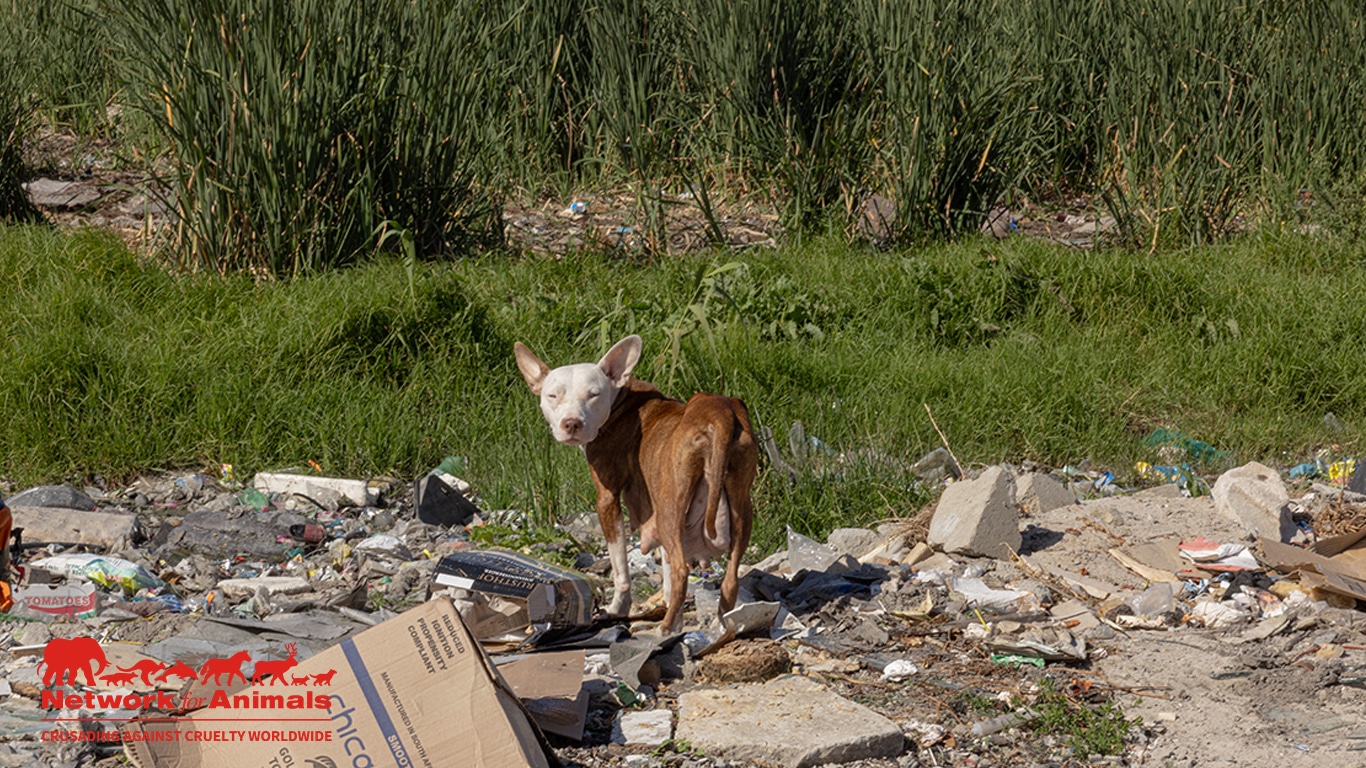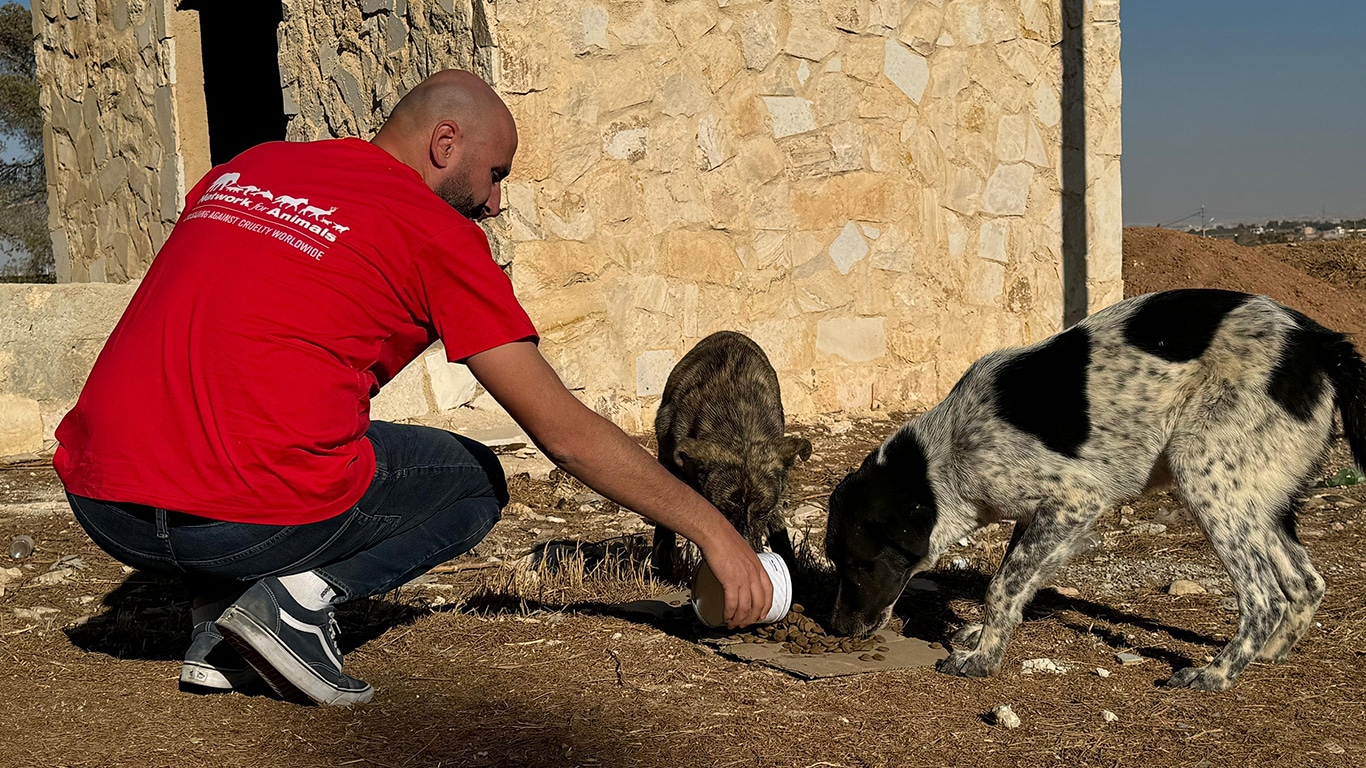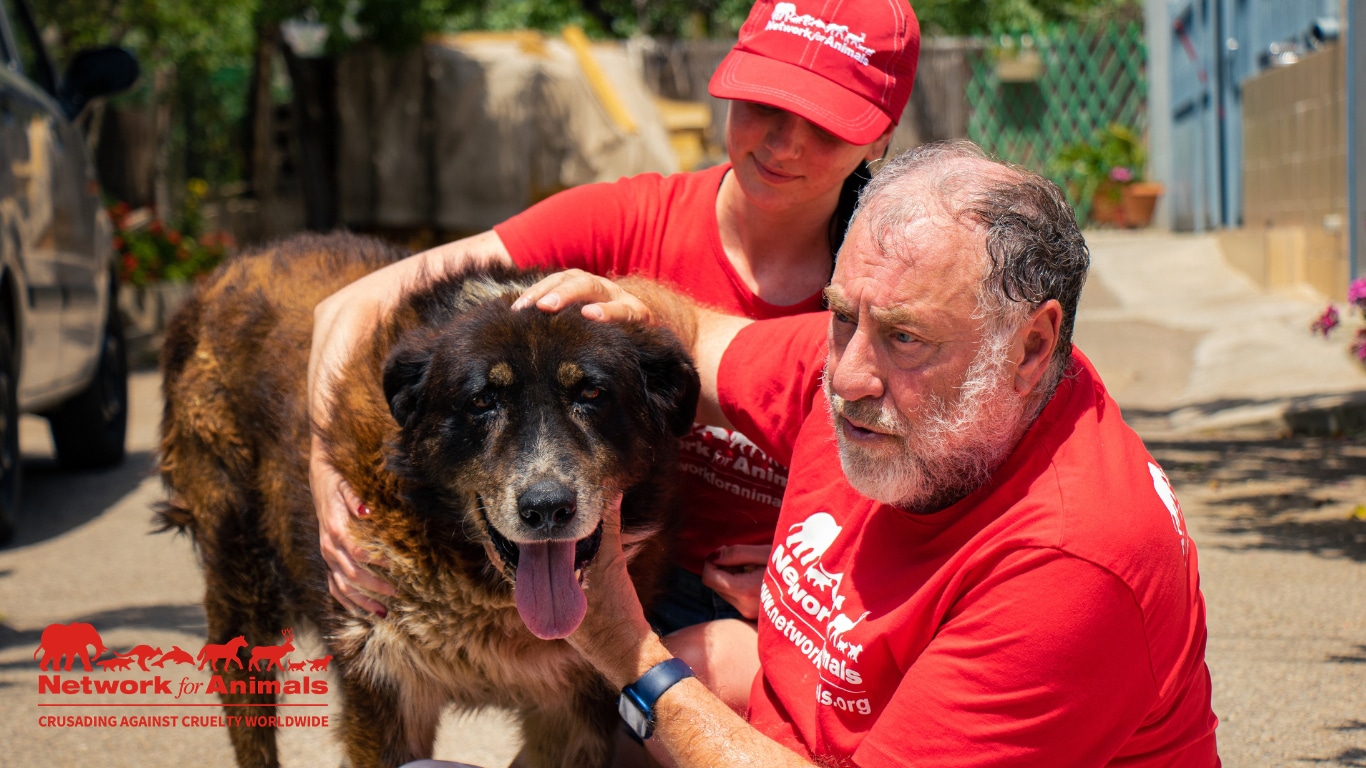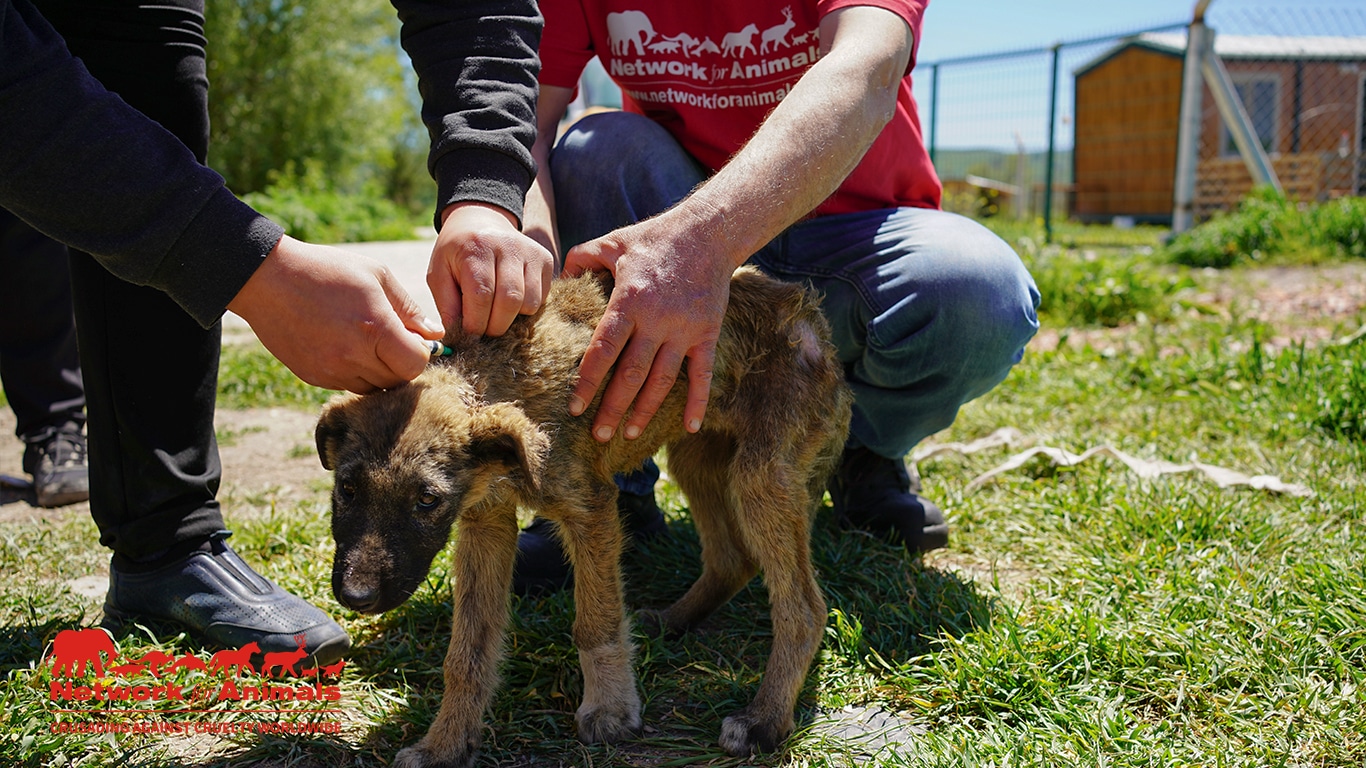As animal-lovers, we adore our furry friends, giving them nothing but love, attention, and lots and lots of treats. But for an estimated 680 million stray dogs and cats, life is little more than pain, suffering and a constant fight for survival.
Stray, or more accurately homeless, animals are often neglected, sidelined and ignored, suffering from starvation, disease, injury and even abuse.
The crisis: Almost 700 million stray animals worldwide
There are an estimated 200 million stray dogs and 480 million stray cats struggling to survive around the world. This is a truly mind-boggling number and can sometimes feel overwhelming – but at Network for Animals, we are dedicated to saving as many as we can, sometimes one animal at a time.

So, where did all these animals come from? As in so many cases, humans are to blame. Irresponsible pet owners do not spay or neuter their pets, and some abandon them on the streets. Unneutered animals can breed rapidly – cats can give birth to up to 19 kittens each year, while dogs can produce as many as 24 puppies yearly. These puppies and kittens quickly grow up and start producing litters of their own, leading to an exponential population growth.
Each new puppy or kitten born on the streets is doomed to a truly tragic existence: a short, hard life of scrabbling for scraps, constant disease and, often, an agonizing death.
At Network for Animals, much of our efforts are focused on far-flung, poverty-stricken areas where animals are suffering the most.
In our work, we often come across animals on the brink of death – emaciated from starvation, riddled with parasites and disease, or suffering from painful, untreated injuries. Naturally, we do everything we can to save each and every one.

The solution: Animal-lovers unite
In most countries, the authorities are responsible for caring for stray animals. But the reality is that few governments take this responsibility seriously, and it is up to compassionate people and organizations to save them.
For large-scale stray population control, trap-neuter-vaccinate-release (TNVR) programs have been proven to be the most effective. As the name suggests, this involves catching strays, neutering them, vaccinating them to limit the spread of disease, and – where appropriate – releasing them back into their existing colonies.
This ensures that there is no ‘vacuum’ which can be filled by other strays having more litters, allowing the colonies to reduce in numbers without more animals being born.
Another crucial step in preventing suffering is to support local animal shelters and have an ‘adopt, don’t shop’ mindset. The majority of stray animals can be nurtured into loving pets with just a little bit of patience and care!

Network for Animals: Putting your donations into action for animals worldwide
Many of our programs are aimed at alleviating suffering for stray dogs and cats. From supporting shelters saving animals from the streets in The Middle East to launching our own TNVR campaigns across Africa and from combating the dog meat trade to rushing emergency aid to animals abandoned in wars and disaster zones, we are on the frontline of the fight to save the world’s animals in 26 countries around the world.

As a non-governmental non-profit organization, we rely on supporters like you to continue our life-saving work. If you’d like to join our mission to uplift animals across the globe from suffering, donate now, subscribe to our newsletter, or browse our current campaigns today.

